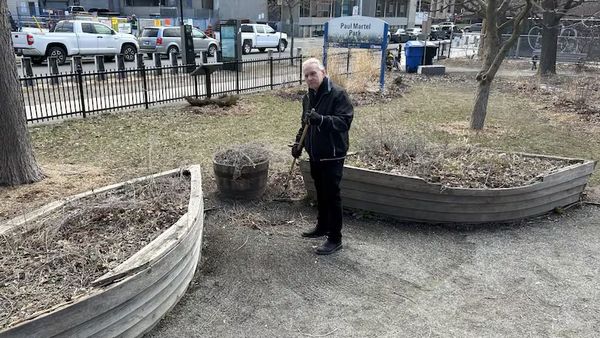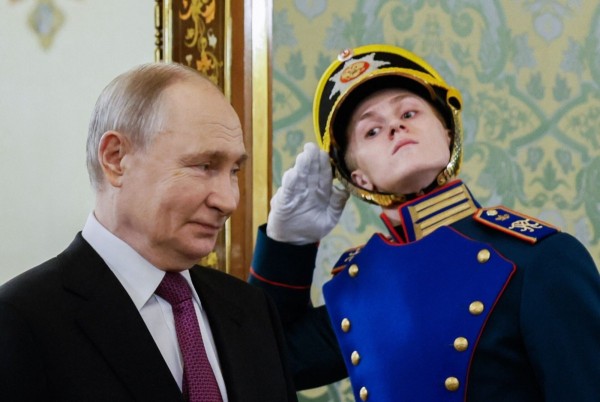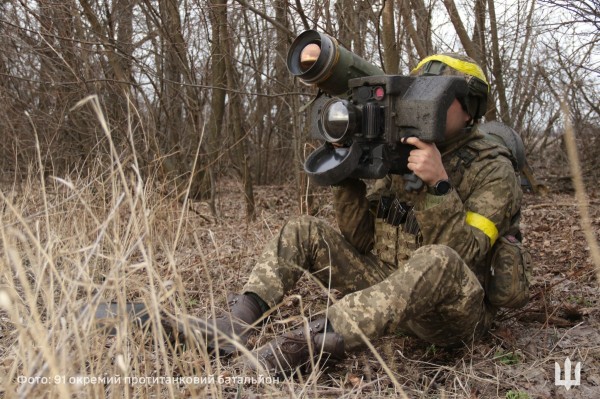It was a full-scale war involving all types of troops. And it is still continuing despite a ceasefire agreement.
The Russian-Georgian war - is part of another, larger war with which Russia intended to give a rejoinder to the West. The question is: why did Russian troops attack Georgia on three fronts, while also making preparations to attack on an additional two fronts on the 12th, 13th, 14th and 15th of August. The attack on the latter two fronts did not materialize, though. The official Russian propaganda version, which says that recognition of an independent South Ossetia was motivated by a desire to protect its citizens living there, does not hold water. For if Moscow’s motivation was to recognize nations expressing a desire for independence, then Moscow would first have recognized the independence of Chechnya.
The Chechens have repeatedly expressed their desire for independence from Russia, going so far as to do so with arms.
Instead of being recognized, Chechnya was run over by tanks, «Grady», artillery, and chemical weapons. Many Chechen fighters were killed with chemical weapons.
When we talk about casualties in South Ossetia, the numbers mentioned are - several hundred dead. One hundred and thirty four persons died in South-Ossetia. Of these, 80% were armed soldiers while 20% were civilians. This, of course, is a tragedy, regardless of whether these were peaceful civilians or soldiers, but it should not be compared with Chechnya because in Chechnya about 200 thousand people from both sides were killed.
As a result, the Russian authorities should have recognized the independence of Chechnya, then the independence of Kosovo, but this was not done, neither before nor after the recognition of the independence of Abkhazia and South Ossetia. For the Russian leadership the right of self-determination for nations is not of concern, it is a policy based on double standards.
Therefore, the assertion that Russia acted in South Ossetia in the interest of protecting its citizens isn’t the least bit convincing. Yes, 90% of the population of South Ossetia hold Russian citizenship. Forty-eight thousand citizens of Ossetian nationality and 20 thousand of Georgian nationality lived in the territory of the former region of South-Ossetia. Nearly 10 thousand Ossetians supported the pro-Georgian Ossetian administration of Dmitry Sanakoev. I remind you that in the 1990-s Sanakoev was one of the leaders of the separatist movement, which with its 500 supporters left the current administration of Kokoity and formed an administration with control not only over Georgian, but also Ossetian villages.
If the goal of Russian authorities was to protect its citizens, they should have done so in Turkmenistan, where Russian citizens were thrust aside and their rights violated.
Invoking the right to protect Russian citizens, in this case - is sheer hypocrisy, it was [simply] a pretext for launching military operations.
The third pretext – was the so-called genocide of Ossetians by the Georgian military. Allegations of genocide, involving the numbers - 1400, 1600, 1800, 3000 were first made on August 8th, at 5 pm by Kokoity, who had left Tskhinvali before the start of military operations. For several weeks, the official Russian media continued and is still continuing to repeat those numbers, despite the fact that Putin, who arrived in Vladikavkaz on August 9th, said with great difficulty, that the lives of several dozens of people were claimed. The ad hoc group of Russian prosecutors, which was sent to the territory of South Ossetia, reported after investigating for a month [only] 134 deaths, 80% of whom were fighters, while the rest - civilians.
So far, in international law, only three cases of genocide have been authenticated: the Armenian genocide by the Ottoman Empire, the Nazi genocide of Jews by Germany (the Holocaust) and the genocide in Rwanda in 1994. Now we talk of genocide in Sudan, where more than half a million people were killed. All other cases are classified as ethnic cleansing. The key parameter is the definition of genocide - the use of state machinery for the destruction of an ethnic group.
Even the case of Kosovo – where 30 thousand Kosovars were killed with nearly a million fleeing the country – is not considered genocide.
The mutual destruction of the Abkhaz and Georgians is considered to be ethnic cleansing. In 1992-93 3000 Abkhazians and 17,000 Georgians were killed in Abkhazia. When the Soviet Union collapsed, 17% of the population in Abkhazia was Abkhazian, while 52% was Georgian. As a result of the Abkhaz war, 250 thousand Georgians fled the territory of Abkhazia. Nowadays, Georgians living in Abkhazia can only be found in the Gali district. Thus, no official explanation for the Russian-Georgian war corresponds to reality.
What started the Russian-Georgian war? One answer is the processes that have been taking place in Georgia over the past 4 years. In short – the fact that Georgia is building a modern, European, democratic state, responsible to the people. For quite some time I have dealt with the issue of economic reforms covering a number of countries at a number of different times, and I must say that there is no other country in the world that has carried out such a number of reforms, within such a short time period and with such excellence.
During the last three years, Georgia's economy has grown 11% to 13% per annum, which is higher than in China. And I must add, despite having no oil or gas. Before the conflict, Georgia imported electricity from Russia. If 3-5 years ago somebody had said that Georgia will be exporting electricity to Russia, nobody would have believed it. Such a man would [today] have been called a prophet. A miracle has occurred in the economic sphere of Georgia. The influx of foreign investment into the country amounted to 17-18% of GDP. In Russia, the ratio of private capital investment to GDP is a little more than 1%. Bear in mind that Georgia is small country with unresolved conflicts and a small market.
What Abkhazia and South Ossetia are in economic terms must also be mentioned. In a nutshell, they are Stalin's enclaves, especially South Ossetia. For the last 4 years, the population of South Ossetia has not been working and does not aspire to work either. People are living on subsidies from the Russian budget, and these subsidies are constantly growing and have reached 700 million U.S. dollars. Divide this amount by 40 thousand people and you’ll realize that Moscow does not subsidize any of its own regions as much as it does South Ossetia.
Putin has allocated an additional 10 billion Russian rubles to South Ossetia; a large military base is now being built in Dzhave. This form of practice was applied there even before the conflict.
Note that before the outbreak of hostilities, the level of militarization of South Ossetia and Abkhazia was rather high.
Russian propaganda during the last month describes Georgia as an extremely militarized country, [it maintains] that the armed forces’ budget over the past 4 years has grown from 30 million dollars to nearly 1 billion. Today, the military budget of Georgia is 8% of GDP, which is a respectable figure. But if we compare the number of soldiers per 100 people: in Georgia there were 6, in Abkhazia – 60, in South Ossetia – 65. There is a tenfold superiority [in those regions]. The number of reservists per 100 people in Georgia is 2.2, in Abkhazia – 16.5 in South Ossetia – 32.6. Here, almost a 15-fold superiority.
Georgia had 4-6 artillery shells per 100,000 people, Abkhazia - 35, South Ossetia - 190. The situation with armored vehicles is similar. Georgia had 5 APCs per 100,000 people, Abkhazia - 75, South Ossetia - 391.
This ratio, without taking into account the practice Russia imposed in Abkhazia and South Ossetia, represents a lot of equipment. In May and June, Abkhazia alone received more than 1500 pieces of technique, artillery shells, tanks and other equipment.
We have no data on the GDP of Abkhazia and South Ossetia, but their probable magnitudes can be ascertained indirectly. According to the roughest of estimates, over the past 4 years Abkhazia has spent 50% of its budget in the military sphere, and South Ossetia - 60%.
This is not the purchase of equipment; it is clear that Russia gave the weapons without charge.
These data can be compared to the U.S. military budget at the height of the Second World War, which amounted to 52%, and Great Britain - 52-54%.
In light of the foregoing it would be absolutely accurate to say that there were Russian military bases in Abkhazia and South Ossetia before the conflict began on the 7th of August. Before August, Abkhazia and South Ossetia were the most militarized regions in the world, apart from North Korea.
We must clearly understand those who militarily resisted the August invasion of Georgia. The objective of the Russian leadership has been regime change, disposing Saakashvili. This was not reported by anyone at any level in Russia. The war against Georgia had been in preparation for the last 4 years. After the Georgian authorities easily solved the problem of Adjara, Moscow began to think about the removal of Saakashvili. In December 2005, the heads of Russian energy companies were summoned to the Kremlin to discuss an energy blockade against Georgia. When the response of energy officials was disappointing to the authorities, they took the matter in their own hands and switched to planning an attack. Soon all the pipelines and transmission lines that went from Russia into Georgia were blown up. Then, this was blamed on terrorists, but the investigation found that the explosive devices used, were the same as those issued to the Russian special services. After this, there was an attempt to eliminate the leader of the Georgian opposition. In 2006, Georgian security services detained several Russian agents, but Georgia has diplomatic ethics and quietly handed them over to Moscow.
Nevertheless, the activity of Russian special services did not diminish, rather it increased. In September 2006, another 4 Russian agents were arrested, but now publicly. After that the [economic] blockade on Georgia began – [involving] transport, visas, wine, Borjomi [the famous Georgian Mineral Water]…
Throughout this period, Russia strengthened its military enclaves in Abkhazia and South Ossetia. Russian diplomats did not hide the fact that the military operation in Georgia would take place before September of this year. Russia restored the Ochamchira railway station and built a second 54 km Sukhumi-Ochamchira line [both in Abhazia]. Using this line Russia imported 50 echelons of military cargo to Abkhazia in May and June. This [purposely] created the impression that the strike would be carried out from Abkhazia.
The shelling of ethnic Georgian villages located in South Ossetia began on August 1st. Previously the Ossetians would stop firing after the Georgian side stopped shooting - this time it was different. The Ossetian side continued firing not only from automatic weapons but also from artillery. Even on the 6th of August the Department of Information of South Ossetia did not conceal that the Russian military already had connections on South-Ossetian territory. On August 3rd, Tskhinvali was visited by Deputy Defense Minister of Russia Nikolai Panko and the Chief of Intelligence. They met with Kokoity. After their departure, Kokoity moved to Java, and began evacuating people from South Ossetia. On the same day, August 3rd, the mobilization of mercenaries in the North Caucasus started, which shows that Russia had already started military activity on August 3rd.
By this time, the 58th army, along with additional units, were deployed at the border of Georgia, altogether some 9 thousand people and 700 pieces of armor. On August 6th, Russian border guards took Roki tunnel from the Georgian side. From the 3rd to the 7th of August, Russian media broadcasted information concerning the beginning of the war, which had not yet started.
On 7th of August, the Georgian side tried to negotiate with the Ossetians. The State Minister of Georgia for Reintegration Temur Yakobashvili went to Tskhinvali and was to meet with Kokoity, under the mediation of Ambassador at Large Popov. Popov was not in Tskhinvali, the reason given was that his bus had broken down. When he was advised to use the spare, he replied that it too was not usable. Yakobashvili met in Tskhinvali with the commander of peacekeeping forces [Russian General] Marat Kulakhmetov, who advised Georgia to declare a unilateral cease fire. At 18:30 Yakobashvili forwarded General Kulakhmetov’s proposal to President Saakashvili by phone. At 19:00 Saakashvili appeared on television stating that the Georgian side is interested in peace. Saakashvili is an assertive man, but he asked, almost begging, [for the Ossetians] to agree [to a cease-fire].
He then announced a unilateral ceasefire, but at 22:10 the Ossetian side first started a massive bombing of the village of Tamarasheni, and then continued with the rest of Georgian villages.
At that time Russian journalists had already arrived in Tskhinvali. But so few civilians remained, that journalists outnumbered the residents. According to [the journalists], there were many Russian soldiers and numerous brawny [paramilitary types] … in the city. According to official figures, prior to the start of military action, some 34 thousand people were evacuated from Tskhinvali region to [Russian] North-Ossetia.
At this time 150 tanks and accompanying [infantry] manpower entered the territory of South-Ossetia from Russia. After seeing the Russian tank columns the Georgian leadership concluded that the war, which Russian politicians had long talked about, had began.
After that, fighting began on three fronts - the storming of Tskhinvali, fighting from Java and from Roki tunnel. Both sides suffered heavy losses. It should be noted that Russian tanks came through Roki tunnel in the evening of August 10. At the same time the Russian compound occupied Upper Abkhazia, and the Black Sea fleet was already off the coast of Georgia. Military analysts have calculated that considering the top speed of the ships, for them to have arrived in Poti on the 9th and 10th of August, they would have had to leave Sevastopol on the evening of August 7th, either before the attack on Tskhinvali, or at the very same moment. It should also be noted that the Ministry of Defense of Russia mobilized armed units in Zemo Larsi and close to the Georgian-Armenian border.
From what has happened and is happening, it is clear that the war is not over, it is continuing. The strategic objective of the war – regime change in Georgia – has not been denied. Russia makes no secret of the fact that Georgia’s choice in favor of the West was [and is] unacceptable. I think everything is just starting. The Russian authorities acted in Georgia in the same manner that a mob does when attacking the weak.
Russia cannot attack the Baltic countries because the Baltics are under the protection of NATO.
For Russia, the similarly democratic and pro-European Ukraine is also unacceptable. Moscow did not like the attitude of Kiev, which in the days of the August conflict openly supported Tbilisi.
Advertisement / Reklaam
Advertisement / Reklaam


















